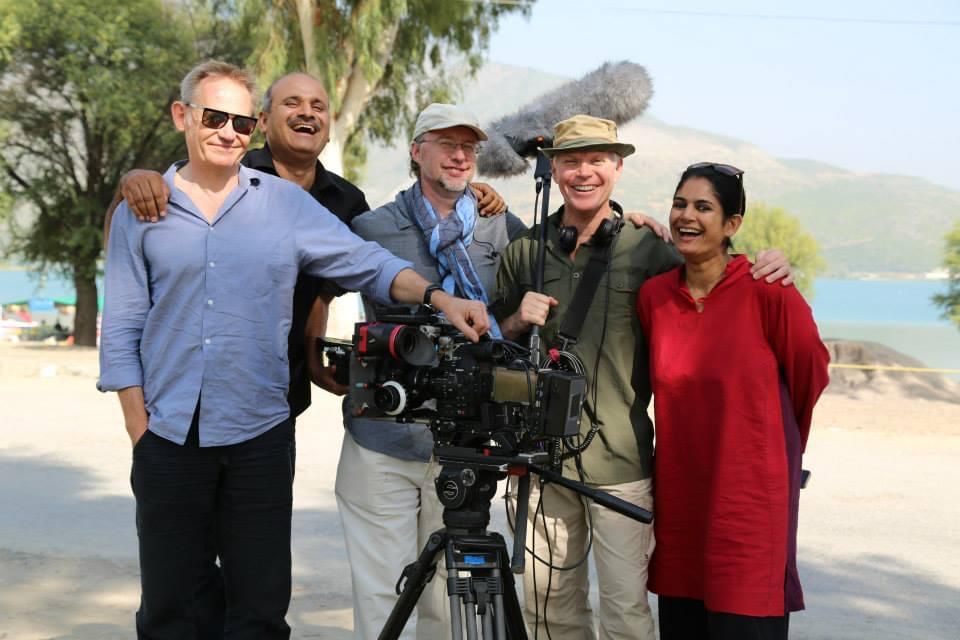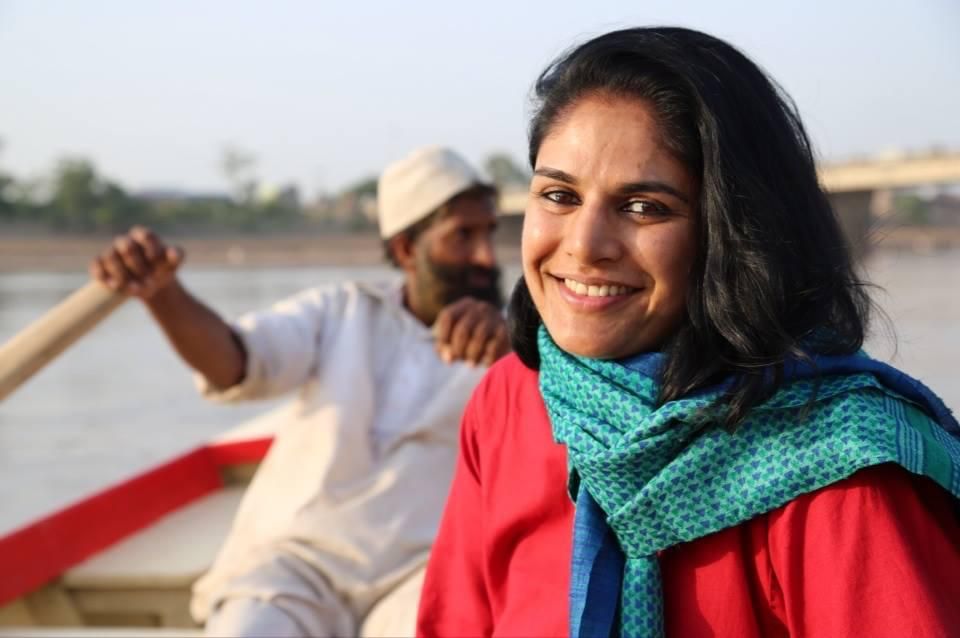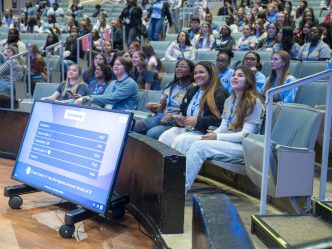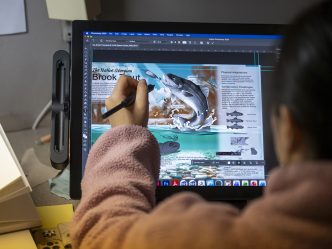London-based curator, writer and broadcaster Sona Datta, PhD, will be a visiting scholar at Augusta University this week and participate in a free screening of the first series of her BBC film “Treasures of the Indus: Pakistan Unveiled” on Tuesday, Sept. 26 at 5 p.m. at the Maxwell Theatre on the Summerville Campus.
As an expert in South Asian heritage, Datta was invited to Augusta University by the Morris Eminent Scholar in Art Anila Quayyum Agha. Following the free film screening of “Treasures of the Indus: Pakistan Unveiled,” Agha and Matthew Buzzell, an award-winning filmmaker and professor in the Department of Art and Design at Augusta University, will host a Q & A with Datta.
“Dr. Datta was the head of South Asian art at the Peabody Essex Museum in Massachusetts. There she extended the museum’s world-renowned 20th-century modernist photography and painting collections to include the best contemporary art referencing South Asia,” Agha said. “The Essex Museum was the first museum to put my work on permanent display, and it’s been fully up since 2016 in a designated room. That was a big deal for me.”
In 2016, the Peabody Essex Museum became home to Agha’s light installation, “Intersections.”
Datta is part of an under-represented group of less than 10% of practitioners within the three-pronged professions of art curation, filmmaking and writing who are female and South Asian, Agha said.
In 2015, Datta wrote and presented the BBC Four film series “Treasures of the Indus,” which has been broadcast to a global audience of more than 90 million people over the past decade, Agha said.
“The BBC series ‘Treasures of the Indus’ was made in 2014 and first broadcast in 2015,” Datta said. “I joined the British Museum in 2005, and in 2006 we did our first big exhibition season called ‘Voices of Bengal’ season, which actually attracted more people of South Asian extraction than any project in the museum’s history, even to this day.”
The BBC Two had a series called “The Museum.” and one of the episodes featured the “Voices of Bengal” season, Datta said.
“One day they filmed me entering the Great Court, walking and talking at the same time,” Datta said, laughing. “Apparently this was some kind of radical act.”
“In total, we travelled 4,000 kilometers covering 5,000 years of material culture. It was an adventure and a privilege.”
Sona Datta, PhD, a curator, writer and broadcaster based in London
The director was impressed with her presence on screen and her timing on camera, Datta said.
“It was soon after this that the BBC offered me my own TV series,” Datta said, adding that initially she turned down the BBC’s offer because she wanted to focus on her career at the British Museum. “Fast forward to 2013, as I was leaving the British Museum and heading out to the Peabody Essex Museum in Massachusetts, the BBC approached me again, and this time I agreed.”
Preparing for the filming of “Treasures of the Indus” was intense, Datta said.
“In preparation for filming in northern Pakistan in the Swat Valley and up by the Afghan border, we had to undertake hostile training,” Datta said, explaining the crew needed to learn what to do if they were taken hostage. “But, in fact, we found Pakistan anything but hostile. People were excited that we had turned up with a BBC film crew and wanted to know about culture and not the tired tropes of terror or Taliban. They immediately opened their hearts and houses to us.”
Datta said the crew spent six weeks filming the episodes and traveled thousands of miles through Pakistan and India.
“In total, we travelled 4,000 kilometers covering 5,000 years of material culture,” Datta said. “It was an adventure and a privilege.”
Datta believes it is important for the world to recognize South Asian heritage and understand the long history of the region.
“History is all about the stories we choose to tell, what we remember, what we choose to forget and who is telling the story,” Datta said, explaining that India and Great Britain have a particular shared and complicated history that spans hundreds of years. “In addition, today, India and South Asia make up about one-fifth of the world’s population, and, within this generation, India will become one of the richest countries in the world, but, sadly, deep inequalities still exist.”

The history of South Asia speaks to many modern concerns regarding “migration, cultural and religious differences as well as economic boom,” Datta said.
“In addition, of course, India and the wider region has thousands of years of art, culture, music, food and even yoga to share with the world,” Datta said, adding that she fell in love with South Asian culture after graduating from Cambridge University. “After studying history of art and philosophy at Cambridge University, I did a complete 180 when I returned to London. Having studied Renaissance painting, European Modernism and American Abstraction, one day I walked into the British Museum and happened upon a show of Indian paintings and drawings. I found brightly colored, jewel-like court paintings from about the 16th to 18th centuries from northern India.”
“People were excited that we had turned up with a BBC film crew and wanted to know about culture and not the tired tropes of terror or Taliban. They immediately opened their hearts and houses to us.”
Sona Datta, PhD, a curator, writer and broadcaster based in London
Datta said she was deeply moved and forever changed by the show.
“I had never encountered or considered a non-Western aesthetic before, and that day I entered a whole new world,” Datta said. “India opened up for me in ways that amounted to more than my mother’s colorful silk saris and pungent home-cooked dinners. I learned Sanskrit, Tamil and studied Indian art and architectural history for my master’s degree and PhD.”
A decade later, she got a job at the British Museum where she was the first person of Asian extraction to work as a curator in the Asia department at the museum, Datta said.
“I learned through osmosis,” Datta said. “It’s where I cut my curatorial teeth. In 2014, I left London to become head of South Asian art at the Peabody Essex Museum in Massachusetts which has, perhaps surprisingly, the most important collection of 20th-century Indian art in any museum in Europe or North America.”
Pamplin College of Arts, Humanities, and Social Sciences and the Department of Art and Design will host a meet-and-greet with Datta at 1 p.m. Tuesday, Sept. 26, in Allgood Hall, room E227.
The free film screening of “Treasures of the Indus: Pakistan Revealed” will be held at 5 p.m. Sept. 26 at the Maxwell Theatre. Datta will also be holding a lecture called, “Curatorial and Artistic Opportunities,” at 6:30 p.m. Wednesday, Sept. 27, at the Morris Museum of Art.
 Augusta University
Augusta University




